
What We’ve Learnt About Accelerating Impact in India
Introduction Investees India: Then and Now The Next Half Billion Who they are What they aspire to Sector-change Approach to Social Impact Sector Profiles Digital Identity Education Emerging Technology Financial Inclusion Governance and Citizen Engagement Property Rights Six Key Learnings for Accelerating Impact Our Team 1 3 7 10 10 12 15 18 19 21 23 25 27 29 32 40 Contents
At Omidyar Network, we are inspired by the limitless potential of the aspiring Indian. As we reflect on our first decade here, we recognise that India has come a long way in creating empowerment and opportunities for all. We have seen that several crucial steps led by governments at the central and state level have been bolstered by a vibrant enterpreneurial ecosystem, civil society, and rapid developments in technology. We feel privileged to be a part of this larger transformation. Along the way, we have learnt so much, walking alongside the entrepreneurs who are changing this country. We wanted to share some of our experiences and learnings with you through this report. For all of us at Omidyar Network, these reflections have spurred an even greater commitment to working with those who can create a meaningful life for every Indian.
Roopa Kudva Managing Director, India
• •
• •
IN10YEARS INDIA(2008-2018)
• 1mg
• AffordPlan
• Agni
• Aspiring Minds
• Bon
• Bridge International Academies*
• Centa
• Comat Technologies
• d.light*
• Dailyhunt
• Doubtnut
• English Helper
• Goodera
• Healofy
• Healthkart
EQUITY INVESTMENTS
• i2e1
• iMerit Technology
• Indifi
• Indus OS
• Intellegrow
• Kaleidofin
• Lenddo*
• myUpchar
• Neogrowth
• Newslaundry
• NowFloats
• Overcart
• Pratilipi
• Quikr
• RailYatri
• Scripbox
• Swarna Pragati
• Scroll.in
• The Ken
• Toffee Insurance
• Transerve Technologies
• TreeHouse
• U2opia*
• Varthana
• Vedantu
• Vistaar
• ZestMoney
• Zimmber
• ZineOne*
• ZipGo
Investments | Grants | Investments in Funds | Research
Investees Equity
*These investments have a global presence, with operations in India.
• Accountability Initiative
• Akshara Foundation
• Anudip Foundation
• Association for Democratic Reforms (ADR)
• The Bridgespan Group
• Centre for Budget and Governance Accountability (CBGA)
• Centre for Digital Financial Inclusion (CDFI)
• Charities Aid Foundation India
• Consortium for Affordable Medical Technologies (CAMTech)
• Dasra
• Digital Identity Research Institute (DIRI)
• eGovernments Foundation
• Foundation for Ecological Security (FES)
• IFMR Finance Foundation
• Harvard | IIT South Asia Initiative
• Impact Investors Council
GRANTS
• Indian Institute for Human Settlements (IIHS)
• Janaagraha
• Jana Urban Space Foundation (JUSF)
• Landesa (RDI)
• MicroSave
• Modular Open Source Identity Platform (MOSIP)
• N/Core
• National Foundation for India (NFI)
• Pratham
• Tata Trusts, State of Odisha: Odisha Slum Titling Programme - Technical Assistance
• Teach for India (TFI)
• The Education Alliance
• Vayam
• Village Capital: Civic Tech Accelerator
• Village Capital: Ed Tech Accelerator
• Villgro Innovations Foundation (VIF)
INVESTMENTS IN FUNDS RESEARCH
• Bharat Inclusive Technologies Seed Fund (BITS Fund)
• Elevar Equity*
• India Impact Investing Infrastructure Fund (IIIF)
• India Quotient Fund (IQF)
• Kalysta Capital
• SEAF India Agribusiness Fund
• SONG Investment Company*
• Lean Data Research: Acumen Fund**
• Building a vibrant entrepreneurial ecosystem in India: Bain in partnership with the Planning Commission
• Unlocking Digital for Bharat: $50B opportunity: Bain, Google
• Research on implications of digitisation and formalisation on MSME credit: Boston Consulting Group (BCG)
• The Identities Project: Caribou Digital**
• Currency of Trust: Dalberg
• Regulatory Sandbox for India Blueprint: Dalberg
• Research on Mass Entrepreneurship: Dalberg
• Study of Informal Settlements in Bengaluru using artificial intelligence (AI) and machine learning (ML): Duke University
• Ministry of Skill Development and Entrepreneurship (MSDE) Technology Diagnostic: E&Y
• Early Childhood Education Research: FSG
• India Property Rights Whitepaper: FSG
• State of Aadhaar Report: ID Insight
• IFC Global Credit Bureau Program
• Innovating for the Next Half Billion
• Improving Governance Through Biometric Authentication and Secure Payments in India: J-PAL
• Impact Investing: Purpose-driven finance finds its place in India: McKinsey
• Customer protection, risk and financial capability in India: MicroSave
• National Institute of Public Finance and Policy: Study on Consent
• Research on Digitisation of Land Records in India: NCAER
• Aadhaar-Enabled Fertiliser Subsidy Pilot Study: Tata Trusts
• Land Records Modernisation in India: IIHS
*These investments have a global presence, with operations in India.
**Research with a global focus, relevant to India.
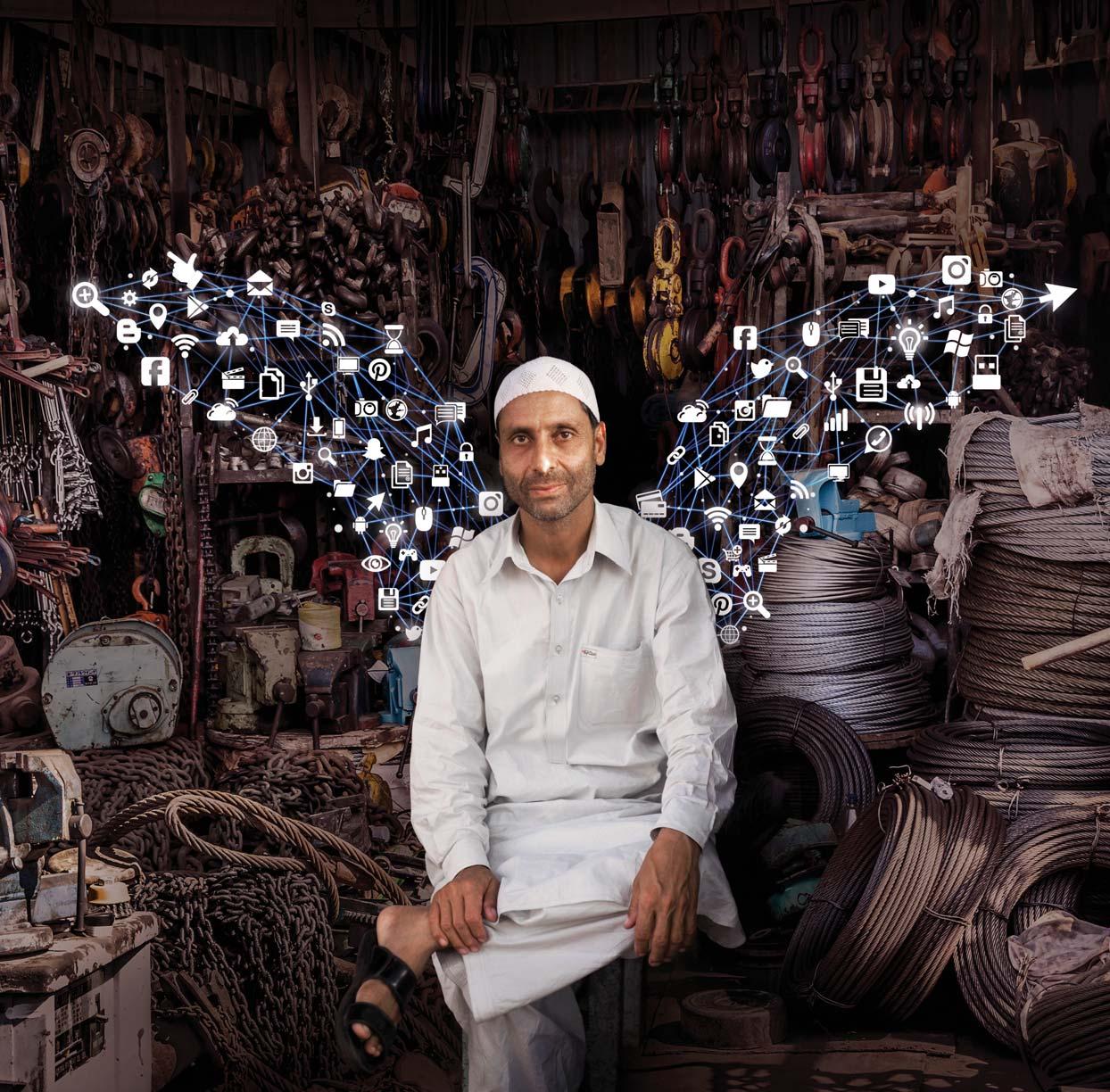
India: Then and Now
India has come a long way in the past few decades, with visible economic progress. This trend has been pronounced over the past 10 years: from early steps taken during the 1990s and early 2000s with an average growth rate of ~5.5 percent to significant acceleration over the past decade with an average growth rate of more than 7 percent. 2008 was the year of the collapse of the Lehman Brothers that triggered a wave of global, economic, political, and social changes over the next decade. The year also saw the launch of the Indian Premier League and Abhinav Bindra winning India’s first and only Olympic gold medal in individual sport. The iPhone was less than a year old, and Aadhaar was not even on the drawing board. That year, Omidyar Network made its first direct investment in India.
Over the past 10 years, Omidyar Network has committed ~US$ 250M in India, of which 70 percent is equity investment and 30 percent are grants.
An unprecedented proliferation of technology, especially mobile phone penetration, has defined the past decade. Together with digital identity in the form of Aadhaar, its associated ‘India Stack’ infrastructure like eKYC, eSign, and the low-cost payments system that is the Unified Payments Interface (UPI), technology is empowering millions of Indians to improve their lives. Policy, governance, and judicial push towards inclusive growth have provided additional impetus to individual empowerment. The Jan Dhan Yojana has moved the debate from financial inclusion to financial health by ensuring that four out of five Indian adults now have a bank account.
The Mahatma Gandhi National Rural Employment Guarantee Act (MGNREGA) grew in its impact and effectiveness in alleviating rural poverty, and was lauded by the World Bank as ‘a stellar example of rural development’ in 2014. The Right to Education Act, passed in 2009, drove near-universal primary school enrolment, advancing the focus from enrolment to learning outcomes. The Pradhan Mantri Awas Yojana (PMAY), launched in 2015, continues to work towards increasing the ease and affordability of owning a decent house for lower and middle-income Indians. And, the Supreme Court in 2017 held that privacy is a fundamental right to be guaranteed to all Indians. Finally, a new wave of purpose-driven entrepreneurs is bringing innovative solutions and business models to improve the lives of the aspiring lower- and middle-income Indians. They will define the future of Indian entrepreneurship over the next few decades, and we are privileged to work with several of them.
123 456 0* # 789 123 456 0* # 789 1 2 3 4 5 6 7 8 9 * 0 # 7
2008 2018
internet users English internet users
US$
*Estimated Source: Internet Trends Year-End Update, Kleiner Perkins Caufield & Byers (KPCB), 2012; Statista; Unique Identification Authority of India (UIDAI); The Global Findex Database; World Bank World Development Indicators 38% 62% 2011 57% 43% 2016
8
Smartphone penetration 300M (2017)44M (2012) Zero Internet penetration 47.6M ~300M adults (2011) Online retail sales Local-language
>770M adults (2017) Bank account penetration 463M Aadhaar
3.8B (2009)US$ 25.1B*
1.17B

The Next Half Billion
Who they are
RICH
> US$ 18,500* l 13M households (5%) E.g. consultants, businessmen, armed forces officers
MIDDLE CLASS
US$ 4,500 - US$ 18,500* l 89M households (31%) E.g. IT/ITES, professors, managers, retail outlet owners
ASPIRERS
US$ 1,150 - US$ 4,500* l 147M households (52%) E.g. vegetable vendors, garment factory workers, domestic help, security guards, police constables
DEPRIVED (Lowest Income)
< US$ 1,150* l 35M households (12%) E.g. small farmers, rural artisans
*
Our focus is on empowering the next half billion ’aspirers’ along with the lowest income segments.
Annual income
10
On the back of sustained economic growth, close to 490M Indians now enjoy middle or higher income status in India. Now, a new wave of Indians is aspiring to make this transition. Over the next five years 500M Indians—the ‘Next Half Billion’ (NHB)—will come online for the first time through their mobile phones. They represent the broadest array of ages and occupations: drivers, maids, delivery staff, daily wage earners like plumbers, electricians and construction workers, security guards, retail vegetable vendors, garment factory workers and small shop owners. They have bold aspirations—they often have little schooling, but dream of sending their children to private schools and engineering colleges. They manage high personal debt, but want financial security for their children. While currently underserved, excluded and disempowered in many ways, they can be empowered to improve their lives through the power of technology and markets. Many lack access to both basic and aspirational services such as quality healthcare, education, banking, convenient transport and social connectivity.
The combination of mobile phone proliferation and rapidly declining data costs means that businesses and governments can now easily reach and serve this population segment that they could not access previously. This has propelled entrepreneurs to come in and develop affordable and market-based services for the NHB. At Omidyar Network, we have a broad lens for defining impact—both in terms of populations we focus on, and the sectors and issues we engage with—compared to the traditional definitions in the social impact space. This is possible because of Omidyar Network’s toolkit—developed and refined globally—comprising both equity investments and grants, an emphasis on technology solutions that comes from our Silicon Valley origins, and a belief in the power of business to do good, as Pierre Omidyar witnessed through eBay.
Our focus is on empowering the next half billion ’aspirers’ along with the lowest income segments.
We support purpose-driven entrepreneurs who leverage technology to serve them. Over the next several years, our focus will remain on the NHB who will continue to evolve in composition and needs as more and more Indians lift themselves towards a higher standard of living.
11












12
S trongandresponsiveinstitutions Access to aspirational services
Protection of individual agency
Opportunities for employment and productivity
The Next Half Billion What they aspire to
The biggest impact in the lives of ‘who we serve’, i.e. the underserved, excluded and disempowered in a rapidly digitising and aspirational India, can be made by innovative solutions that provide them:
• Access to aspirational products and services, such as utilitarian products and services, community connectivity, stable housing, and high-quality education.
• Opportunities for employment and productivity, through skilling, education, access to property rights, and small and medium enterprise (SME) financing solutions.
• Protection of individual agency through individual rights and freedom, consent and privacy, and freedom of media.
Moreover, for societal health and well-being, and for entrepreneurship to flourish, strong and responsive institutions are vital. Thus, we work equally in areas such as enabling civic technology entrepreneurship, developing a robust nonprofit sector, and enabling technology platforms (for example, the Unified Payments Interface, IndiaStack) that provide the ‘rails’ on which the entrepreneurs can develop solutions at scale. We also collaborate with central and state governments and regulators on pilot projects, research, and policy inputs to strengthen institutional capacity.
13

Sector-change Approach to Social Impact
Accelerating the development of an entire sector can improve many more lives as compared to supporting a single organisation in that sector. For instance, a single fintech firm can help tens of thousands of consumers access critical financial services to meet their goals. On the other hand, accelerated development of an inclusive fintech sector can help hundreds of millions of consumers globally in meeting their financial goals.
Omidyar Network’s global model of investing in sector development has served us well in India. It involves:
Supporting market innovators, building market infrastructure, and informing policy discussions that drive sector-level change. Therefore, Omidyar Network’s dual checkbook approach of equity investments and grants aims to operate at all three levels.
Supporting market innovators: We support entrepreneurs who pioneer new and disruptive models in new markets, with potential for scale.
• Kaleidofin helps underserved Indian consumers meet their life goals by matching them with financial solutions tailored to their unique needs. These consumers presently manage their finances through informal means.
• Transerve Technologies works with cities to provide affordable tech solutions to infrastructure management issues such as property tax collection.
• 1mg is India’s leading online pharmacy and integrated health application, offering Indian consumers a trusted database that promotes open knowledge and transparency around medical information, doctors, clinics, diagnostic centres, and local pharmacies to enable a one-stop medical search and transaction experience.
• Aspiring Minds offers assessment tools that help students in India enhance their employability, and connect to suitable job opportunities.
• Toffee Insurance is a fintech platform that offers bite-sized, affordable insurance products tailored to millennials and digital natives (ages 20-35). Toffee aims to significantly simplify insurance by positioning its products on the lines of fast-moving consumer goods.
15
Building market infrastructure: We support a wide array of organisations that address needs shared by all industry players, including:
Industry associations: Impact Investors Council (IIC) has mainstreamed and continues to promote impact investing in India.
• Information exchanges: Our global investees, MFX Solutions, Microfinance Information Exchange (MIX), and the Consultative Group to Assist the Poor (CGAP), a global partnership, initially helped the microfinance sector move from a grant-based to a commercial model and navigate challenges along the way.
• Capacity building in education: Teach for India engages talented young leaders to work in the country’s education sector, and help all children receive high-quality education.
• Technology infrastructure for local governments: eGovernments Foundation provides a platform for urban local bodies to offer a range of citizen services efficiently and transparently.
Informing policy decisions to promote competition and entrepreneurship, ensure consumer protection, and make markets more inclusive.
I Supporting research:
• The two annual State of Aadhaar reports have brought evidence and nuance to a binary and often acrimonious debate on Aadhaar.
• The Currency of Trust brought the consumer’s voice to the financial inclusion discourse, and along with the blueprint of a ‘regulatory sandbox’, helped inform the report of the Household Finance Committee of the RBI in 2017.
• The research by Duke University on the slums of Bengaluru provided new insights: the actual number of slums (above 2,000) is over three times the official records (597), and the price of a single home in a slum is INR 15 lakhs. It also challenged the belief that slum dwellers were temporary migrants, finding that over half of the slum households were living in their respective settlements for over 20 years.
I Investees’ role in regulatory reform:
1mg led the industry body of ePharmacies in attaining recognition for e-pharmacy models through enabling a better understanding of these among central regulatory and government bodies. This helped streamline a fragmented industry.
• ZipGo is working with state governments to bring regulatory clarity for app-based bus sharing.
16







18 Governance and Citizen Engagement Property Rights Sector Profiles Education Digital Identity Emerging Technology Financial Inclusion
Digital Identity
Investment Strategy
Omidyar Network supports policies and technologies for a safe digital future. We do so by promoting the design and implementation of ‘good ID’ that is available and useful to individuals; is non-discriminatory and designed for inclusion, meaningful user-control, and privacy; and provides for recourse and accountability for harms caused.
We focus on multiple paths to get us to ‘good ID’:
• Funding research to build a robust evidence base; for example, on data protection focusing on themes such as informed consent, vulnerable populations, accountability, and institutional capacity.
• Supporting data-driven discourse on Aadhaar, including the costs, use cases, benefits, and risks.
• Enabling entrepreneurs who use technology, data and identity to empower individuals in a secure, cost-effective, and privacy-enhancing manner.
Portfolio
ResearchGrantsEquity investments
• Bharat Inclusive Technologies Seed Fund (BITS Fund)

• Digital Identity Research Institute (DIRI)
• Modular Open Source Identity Platform (MOSIP)
• The Identities Project: Caribou Digital
• State of Aadhaar Reports: ID Insight
• Study on Consent: National Institute of Public Finance and Policy

• Aadhaar-Enabled Fertiliser Subsidy
Pilot Study: Tata Trusts
Digital Identity Research Institute

19
The State of Aadhaar Reports


The purpose of this study is to move the needle on the Aadhaar discussion from being binary and anecdotal to becoming nuanced and data-driven around the topics of exclusion, data errors, and privacy. This unique report studies the costs, use cases, benefits, and risks of Aadhaar across two editions released in 2017 and 2018. Overall, the 2018 report highlighted ‘what is working‘ and ’what is not working’ in Aadhaar. The central government formally acknowledged the report, and publicly stated that it will address the issues of exclusion. Going forward, the report will continue to push the sector from an ideology-driven discussion to facts-based solutions.




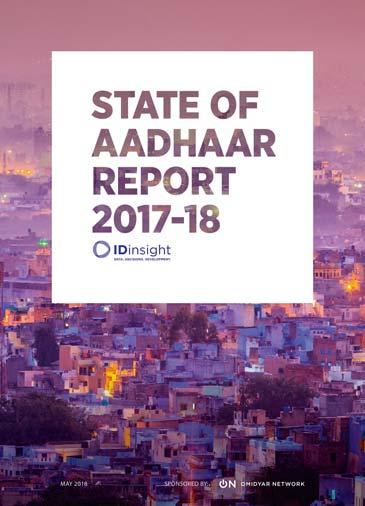

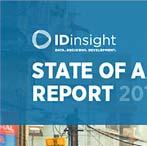

Key Insights
A majority of Indians value privacy, but also approve of linking Aadhaar to services: 87 percent of rural residents approve mandatory linking of Aadhaar to government services; the corresponding figure for private services is 77 percent.
Exclusion from food ration (PDS) due to Aadhaar-related factors is significant, but lower than non-Aadhaar factors. 2.2 percent or ~1.2M are excluded monthly due to Aadhaar-related factors in Rajasthan, compared to 6.5 percent due to non-Aadhaar factors.
20
Education
Investment Strategy
Omidyar Network believes that there are few more direct pathways to opportunity than education. By focusing on improving student learning outcomes, we can begin to address some of the greatest unmet needs in education. We consider critical thinking and building competencies like communication, collaboration, and creativity as well as character qualities like adaptability, initiative, and curiosity as important parts of learning. We aim to bring accessible, equitable, and scalable quality solutions, and to empower parents and communities in the process. We also believe that technology has the potential to be a valuable educational tool for teachers and students. Our work focuses on the following themes:
• K12 ed tech: High-growth technology products and services, evaluation tools, partnerships, and resources to scale differentiated and personalised learning solutions to meet students’ unique needs.
• K12 innovative school models: Innovative school models and pedagogic approaches that can scale impact and indirectly inspire both public and private education providers to improve learning outcomes.
• Connected skilling for work readiness: Online or blended solutions for skills training that are directly linked to employers.
Portfolio
Equity investments
• Aspiring Minds
• Bridge International Academies
• Centa
• Doubtnut

• English Helper
• TreeHouse
• Varthana
• Vedantu

ResearchGrants
• Akshara Foundation

• Anudip Foundation
• Charities Aid Foundation India
• Pratham

• Teach for India (TFI)
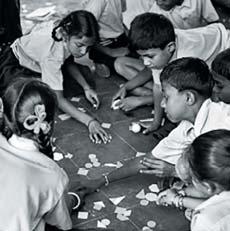



• The Education Alliance
• Village Capital: Ed Tech Accelerator
• Villgro Innovations Foundation (VIF)
• Research on Mass Entrepreneurship: Dalberg
• Ministry of Skill Development and Entrepreneurship (MSDE) Technology Diagnostic: E&Y
• Early Childhood Education Research: FSG
21
Akshara Foundation
Akshara Foundation works with government schools to provide a range of child-centric education programmes, with a particular focus on addressing the lack of foundational reading and math skills in primary schools and the low quality of pre-school education. One of their programmes, the Akshara Ganitha, is a math support programme that helps students and teachers in government primary schools improve math proficiency. Since the programme was originally introduced in schools in rural Bengaluru, student performance has improved significantly. The programme has scaled to reach over 914,100 children across 16,256 schools in Karnataka and Odisha. In addition, Akshara has also had significant sector impact— the governments of Karnataka and Odisha are seek ing to roll out their programmes state-wide.


22
Emerging Technology
Investment Strategy
Omidyar Network invests in iconic, innovative technology companies in impactful areas which, if successful, will empower hundreds of millions of Indians, especially the NHB, thereby achieving massive impact at scale.





Our work spans the following themes:



• Utilitarian products and services: Providing access to quality, affordable utilitarian products (for example, smartphones, furniture, bikes, apparel, grocery/food), and services (for example, travel and accommodation, transit and transportation, renting a home).

• Local content and networks: Delivering local language, India-specific content to the NHB based on a deep understanding of their social and cultural context, and addressing particularly underserved segments such as women.
• Future of work: Connecting individuals to job opportunities, and offering safety nets to income earners in the gig economy.

• Digital health: Using a patient-centric approach to improve information/awareness, physical access, and affordability of quality healthcare.
• SME tech: Improving operational efficiencies, yield/income, discovery, and reach of SMEs.
Portfolio
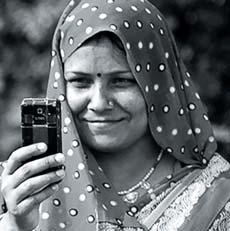
ResearchEquity investments

• 1mg
• Innovating for the Next Half Billion
• Unlocking Digital for Bharat: $50B opportunity: Bain, Google, Omidyar Network
• Zimmber
• Dailyhunt
• Goodera
• Healofy • Healthkart • i2e1
• Indus OS • myUpchar
• NowFloats
• Overcart
• Pratilipi
• Quikr
• RailYatri
• U2opia
• ZipGo
23
RailYatriDailyhunt

RailYatri’s mission is to simplify train travel. Their mobile app provides real-time information on live train status, PNR Status, seat availability predictions, fare calculator, platforms/facilities at stations, personalised alerts, and access to essential travel services like meals and taxis. RailYatri provides information on over 9,000 locations and 14,500 trains (including long-distance trains, local trains and metros), and has also partnered with restaurants in 200 cities. The RailYatri app has crossed 25 million downloads.
“Live train status means I don’t need to worry about the current station while travelling at night. I can just check the status on RailYatri.”
Dailyhunt is India’s #1 news and local language content application with over 200 million app installs offering 100,000+ news articles in 15 languages licensed from over 800 publication partners every day. The Dailyhunt group has 100+ million users spending over 10 billion minutes on the service every month.

24
Financial Inclusion

Investment Strategy
Omidyar Network invests in the pioneering use of technology, from mobile to electronic currency, to make financial products more affordable, flexible, and convenient. Moreover, we work closely with entrepreneurs to ensure that these innovations are responsibly and successfully brought to market. Thus, we support policy reforms, consumer research, and innovations that deliver formal financial services to the mass market. In India, we support financial services targeted at the NHB, small businesses, and small and marginal farmers in improving their financial outcomes.
Our work focuses on the following themes:
• Consumer-centric neo-banks: Digital only, mobile-first banks that give consumers greater control over finances by delivering highly personalised service at lower costs.
• InsureTech: Business models that disrupt insurance markets with data, technology, and customer-centric design.
• Digital credit: Digital innovations that expand access to formal credit, particularly for small businesses, informal workers, low-income households, and for income-generating uses.
• Modernising regulation: Supporting regulation and supervision of finance to be digitally native, innovation-friendly, consumer-centric, and risk-proportionate by working with regulators, policy entrepreneurs, and tech innovators.
Portfolio
ResearchGrantsEquity investments


• Centre for Digital Financial Inclusion (CDFI)




• IFMR Finance Foundation
• MicroSave
• Kaleidofin
• Lenddo
• Neogrowth
• Scripbox
• Toffee Insurance
• Vistaar
• ZestMoney

• ZineOne
• Research on implications of digitisation and formalisation on MSME credit: Boston Consulting Group (BCG)
• Currency of Trust: Dalberg
• Regulatory Sandbox for India Blueprint: Dalberg
• IFC Global Credit Bureau Program
• Customer protection, risk and financial capability in India: MicroSave
• Bon
• Cignifi
• Indifi
• Intellegrow
25
Vistaar Finance
Vistaar Finance is a non-banking financial company that provides affordable credit to SMEs in rural and semi-urban areas in India. Most of their customers are underserved or excluded altogether from the formal financial system. Vistaar has evolved an alternative credit assessment model, based on a deep understanding of their customers. Since inception, Vistaar has provided credit to 150,000+ borrowers and impacted 400,000+ lives by financing income-generating opportunities in dairy, agriculture, groceries, and small-scale manufacturing. In addition, Vistaar has pioneered the business model of a pure-play lender to MSMEs in rural and semi-urban India. In the process, it has catalysed meaningful indirect lending in the space, and its success has encouraged other players such as small-finance banks to serve this segment.

26
Governance and Citizen Engagement

Investment Strategy
Omidyar Network seeks to strengthen the relationship between citizens and government. We enable citizens to be informed, have agency over the issues that matter most to them, and hold their political leaders to account.
We work to support:
• Independent journalism that reports on issues concerning citizens and civil society through support such as equity investments in new business models.
• Entrepreneurs with innovative web and mobile tools that make citizen participation easier and more meaningful, and help governments respond to citizens’ needs.
• Civil society organisations and innovative start-ups that define best practices around governments’ disclosure of information. This includes information around government-delivered services, legislative performance, public revenue, and expenditure.
Portfolio
ResearchGrantsEquity investments


• Newslaundry
• Scroll.in
• The Ken
• Accountability Initiative
• Association for Democratic
• Reforms (ADR)


• Centre for Budget and Governance Accountability (CBGA)

• Dasra
• eGovernments Foundation
• Janaagraha
• National Foundation for India (NFI)
• Vayam
• Village Capital: Civic Tech Accelerator
Improving Governance Through Biometric Authentication and Secure Payments in India: J-PAL
27
Association for Democratic Reforms (ADR)

The Association for Democratic Reforms (ADR) works to improve the functioning of India’s democracy by strengthening electoral processes. Its programmes empower citizens to make informed electoral choices. Under its flagship programme The Election Watch, ADR analyses and disseminates background details provided by candidates to the Election Commission. The Election Watch covers every Lok Sabha, Rajya Sabha, and State Assembly election. It even covers local government elections in some states. Through its PULL SMS programme, anybody in the country can get criminal, financial and educational details about their elected representative, by sending an SMS from their phone. In addition, ADR engages in various grass-root level campaigning and interactive activities to make voters aware of the background details of electoral candidates.
ADR has had tremendous impact on India’s electoral processes and citizen empowerment. For instance, its advocacy efforts have brought about landmark judgements, including:
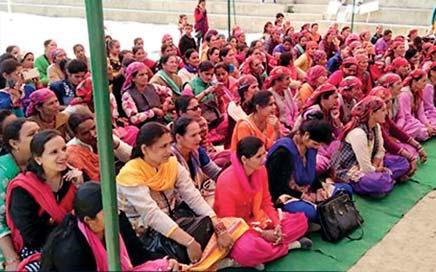
• The Supreme Court of India’s judgement that disqualifies elected representatives who have been convicted of an offence.
• The Central Information Commission‘s judgement that brought six national parties under the ambit of the RTI Act.
• The Supreme Court ruling that the right to register a ‘none of the above (NOTA)’ vote in elections should apply, thus ordering the Election Commission to provide such a button in the Electronic Voting Machines.
• The Supreme Court judgement holding that the Election Commission of India has the power to disqualify a candidate in relation to filing of false election expenditure statement under the Representation of People Act.
28
Property Rights
Investment Strategy
Omidyar Network seeks to enable secure rights to land, and stable housing access for all by investing in organisations that deploy cost-effective technology tools and innovative delivery models towards this end. We support national priorities in India such as effective land administration, enabling improvement of informal urban settlements, and capacity building within think tanks and other institutions engaged in policy support.
Our work spans the following themes:
• Technology innovations that make it easier, faster, and cheaper to access property rights; for example, technology platforms for land information as public good.
• New models of documentation for improved delivery of property rights; for example, secure access for commons and communities, support for state-of-the-art land administration technology, and processes.
• Building and growing a movement for creating awareness of issues, and for nudging action on required actions; for example, supporting research related to informal settlements.
Portfolio
ResearchGrantsEquity investments

• Swarna Pragati
• Transerve Technologies
• Foundation for Ecological Security (FES)
• Indian Institute for Human Settlements (IIHS)

• Jana Urban Space Foundation (JUSF)
• Landesa (RDI)
• N/Core
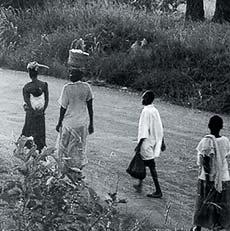
• Tata Trusts, State of Odisha: Odisha Slum Titling ProgrammeTechnical Assistance
• Study of Informal Settlements in Bengaluru using artificial intelligence (AI) and machine learning (ML): Duke University
• India Property Rights Whitepaper: FSG
• Research on Digitisation of Land Records in India: NCAER

• Land Records Modernisation in India: IIHS

29
World’s largest slum titling project in Odisha
Recognising that slum dwellers are the lifeline of our cities, the government of Odisha enacted a law to provide land titles to slum dwellers in the state covering over 250,000 households. Omidyar Network worked closely with Tata Trusts and the Government of Odisha to provide technical and sector expertise. This has been labelled the world’s largest slum titling project, which will benefit over one million slum dwellers. In particular, Omidyar Network supported the use of drones for mapping slums. This has led to accelerated and accurate implementation of this initiative. “What may have taken us years to do, we have done in a few months,” G. Mathi Vathanan, the state housing department commissioner-cum-secretary, said citing deployment of drones. This unique project caught the attention of mainstream and social media. It also catalysed activity for the upliftment of hundreds of millions of urban poor, through missions such as Liveable Habitat. This has the potential to initiate large-scale improvement in the quality of life in urban informal settlements. Using our learnings from this project, we continue to engage with other state governments, for example, Punjab and Niti Aayog, to amplify the impact.

30

Six Key Learnings for Accelerating Impact
32
Mobile phone is one of the biggest drivers of social impact in India
The mobile phone is one of the biggest drivers of social impact in India, making it possible to provide a range of services—access to information, jobs, education, healthcare, transportation, financial services, and government services—to populations that Omidyar Network is focused on. Many of these consumers have previously been excluded or underserved. We are at the early stages of this journey, and as we address the barriers that the NHB face in their digital journey—from coming online to transacting on the internet —the momentum in driving social change will build up.
Some examples of mobile-enabled solutions from Omidyar Network’s portfolio:
• Quikr is a marketplace focused on blue-collar jobs and commerce, and is a massive hub of activity and business for small traders.
• Pratilipi is a self-publishing platform for Indian languages with over one million downloads. Women comprise 71 percent readers and 40 percent authors, in contrast to the overall online population in India that is predominantly male.
• Affordplan is a savings solution that helps lower- and middle-income patients with financial planning for medical needs.
• Vedantu is an online tutoring platform that has reached students across 400+ cities with access to quality teaching, even in geographically remote regions.
Nowf loats is a platform that helps small and medium businesses in India establish a presence online in order to be discovered by and connect with new clients.
• Dailyhunt is India’s #1news and local language content application that offers over 100,000 news articles in 15 languages every day, and has reached over 200 million app installs.
33
business models
Back in 2008, impact investing and social enterprises were at an early stage of development, and focused on a few sectors. Clean energy and financial inclusion were priority areas. Within financial inclusion, investments were weighted towards microfinance institutions. Our goal of addressing whitespaces led us to support new business models; for example, alternative lending models such as Vistaar and off-grid lighting such as d.light.
Social impact at scale requires more than just one great innovative firm. An important pathway to scale is the indirect inspiration or motivation that pioneers provide to copycats, and the competitive responses that build on, extend and sometimes even replace the initial pioneer. Some early pioneers whom we supported have accelerated market impact beyond just scaling to serve their customer base. They opened new markets and solutions that increased inclusiveness and affordability, and crowded in other entrepreneurs and funders.
Some examples of business-model pioneers from our portfolio:
• Vistaar provides credit solutions to unserved small businesses through a unique methodology for evaluating creditworthiness, usually in the absence of traditional documents. They serve over 42,000 small businesses with a loan book of INR 1,300 crores, and have pioneered new methods of serving the MSME segment in India.
• Foundation for Ecological Security (FES) demonstrated that granting legal right to common lands could shift community incentives from misuse towards productive stewardship. To date, FES has reached four million villagers and delivered ~1.8X increase in household income. Their activities have generated biomass equivalent to what afforestation the size of the state of Kerala would generate annually. They have also brought in additional funders in this space, and crowded in funding of over US$ 20M to further the work with the commons.
Varthana pioneered credit to affordable private schools to help improve infrastructure, teaching facilities and teachers’ training. In 2018, Varthana closed a US$ 50M funding led by Chrys Capital, a leading India-focused private equity (PE) fund—proof that the business model is successfully delivering intended impact.
• Indus OS re-imagined the mobile for the NHB through their regional-language mobile operating system, which caters to the non-English speaking user base in India. Since their launch in 2015, they have served a user base of over 10 million and have helped accelerate mobile internet adoption. In addition to their own user base, they have also served to amplify the demand for India-specific user experiences and products.
34
Pioneering
have a multiplier effect
Investments in research pave the way for sector-level change
Research can play a vital role in driving sector-level change by sensitising entrepreneurs to new opportunities, and by contributing data to inform policy debates. In addition to supporting entrepreneurs, Omidyar Network has also supported sector development through research, such as the ones highlighted below:
• Our report Innovating for the Next Half Billion detailed how innovators can ef fectively reach the next wave of over 500 million Indians coming online via their mobile phones over the next f ive years.
These new internet users represent an unprecedented opportunity for entrepreneurs to reach a previously underserved population. Using data from our investee Indus OS, Innovating for the Next Half Billion identified how this population is different from the preceding wave of Indian internet users. The report also identified potential solutions to the barriers the NHB face and perceive, and helped sensitise entrepreneurs to new opportunities for transformational impact.
• Funding the Indian School of Business (ISB) to establish the Digital Identity Research Initiative (DIRI): This is aimed at supporting research that seeks to better understand the impact of Aadhaar—generate evidence on the benefits, costs, use cases, and risks of the programme. Previous studies had suggested a clear need to generate robust empirical and independent research that can usefully inform policy development. The goal is also to generate data and lessons from the Indian experience that can be used for individual empowerment across the world. Recent successes include the government’s acknowledgement and intent to act on the findings of the research, thereby ensuring inclusion and empowerment for millions.
• As part of the Impact Investors Council, we supported a research project by McKinsey, Impact investing: Purpose-driven finance finds its place in India, to study how impact investing is developing in India. This research served to provide credible information to investors, businesses, entrepreneurs, philanthropists, not-for-profits, and governments about the role they can play in using impact investment to improve lives and the environment. This report brought into spotlight some lesser-known facts such as the returns from impact investing being similar to or better as compared to other asset classes.
• A study by Duke University on the slums of Bengaluru generated new insights on urbanisation in India that would inform city planning for local governments. This was the first geospatial study any urban centre in India conducted using satellite imagery and machine learning, and also the first longitudinal study of slums in Bengaluru.
35
Focused research helps drive change in a sector, and enables donors and investors like Omidyar Network to thoughtfully fund frontier technologies, support pioneering business models, and contribute to policy debates.
Impact investing and social enterprise were nascent in 2010: a total of US$ 0.5B was channelled into impact investments in India in 2010, and annual private philanthropic giving was far below potential—less than 0.4 percent of GDP in 2011. To unlock greater capital flows, Omidyar Network invested in organisations addressing the systemic barriers to a greater supply of capital:
• Founding of an industry body has accelerated the awareness of and growth in impact investing. The Impact Investors Council was founded in 2011 to develop a collective platform for advocacy, and to increase supply of capital for impact investing.
• Supporting Strategic Philanthropy: Helping answer philanthropists’ questions like “Which causes should I support?”, “Is my capital driving impact?”, “Why impact investing—I don’t feel comfortable making profits from philanthropy and social impact?” can help drive greater capital flows. Creating a broader tool kit for philanthropy, which includes market-based approaches such as equity investments in for-profit social enterprises, can be powerful complements to grants for nonprofits. We support leading organisations that are helping unlock supply of capital for social impact:
• Dasra is a platform to enable philanthropists to articulate their ‘giving vision’ and manage their portfolio of commitments, answering critical questions like fit with vision and impact delivered.
• Goodera is a technology platform to enable Corporate Social Responsibility (CSR) functions with automation and intelligence across monitoring and evaluation, impact measurement, grant making, reporting, and employee volunteering. They manage over 10 percent of India’s CSR spend.
36
Unlocking supply of capital is catalytic in nascent markets
Failures provide rich insights to improve decision-making
Omidyar Network has had its share of investments that failed, resulting in write-offs. In the case of grants too, Omidyar Network has not always had the level of success that was anticipated at the time of making them. While we strive to learn from failures and use them to drive disciplined decision-making on investments and grants, we want to ensure that failures don’t make us risk-averse, and inhibit us from making the bold bets that Omidyar Network’s risk capital is ideally suited for.
Some of the root causes underlying our failures have been:
• Lack of a robust investment thesis: In certain cases, the investment was followed through with, even when the investment thesis did not seem fully robust. More often than not, such cases resulted in failures.
• Inadequate reference checks: We have seen sub-par outcomes in a few instances when we did not go deep enough on negative feedback that came up during our reference checks for entrepreneurs.
• Underestimated capital-intensity of businesses: In some cases, we have failed to correctly estimate the scale and capital required for the unit economics to become favourable. Often, these were also low-tech businesses that did not have the potential for non-linear scaling, which constrained improvement in unit economics.
• Large bets on unproven models: Sometimes, the first check sizes were too large for seed-stage investments in unproven models.
• Underestimating complexities nonprofits face in working with governments: In case of grants, we have seen lack of success in some cases where we have underestimated the complexity involved for a grantee in working with governments.
37
Early-stage investing is a high-risk and difficult space. Solving complex and longstanding social problems is even harder. We benefit in numerous ways from being part of a global firm. Omidyar Network’s India strategy and investment decisions are deeply informed by our global strategies and rich insights from investments all over the world—be it ed tech models in schools in Africa; goal-based savings models in Indonesia; civic tech organisations in the US; the power of enabling open and free access to geospatial information; or research on universal basic income in Alaska. Our Silicon Valley heritage helps us stay abreast of the latest trends in technology, and support Indian entrepreneurs with know-how in areas such as product management. Our global networks with investors, donors, philanthropists, academia, regulators, governments, sector experts, and other influencers enable us to accelerate impact through collaboration and partnerships, and learn from others.
At the same time, maximising impact in a unique and complex country like India requires a team on the ground with a deep understanding of the rapidly evolving local context and with strong connections with the players in the Indian entrepreneurial, regulatory and policy ecosystem.
While retaining the core of our global model (dual checkbook, focus on technology, broader definition of impact populations and sectors) and global strategies centred around sector change, we have adapted our strategy specifically for India.
As we look ahead towards the next 10 years, we believe that this global-local combination will enable us to contribute effectively and work with inspiring entrepreneurs, co-investors, donors, governments, and our other partners and stakeholders in delivering social impact at scale in India.
A unique and complex country like India requires a regionally nuanced approach
38
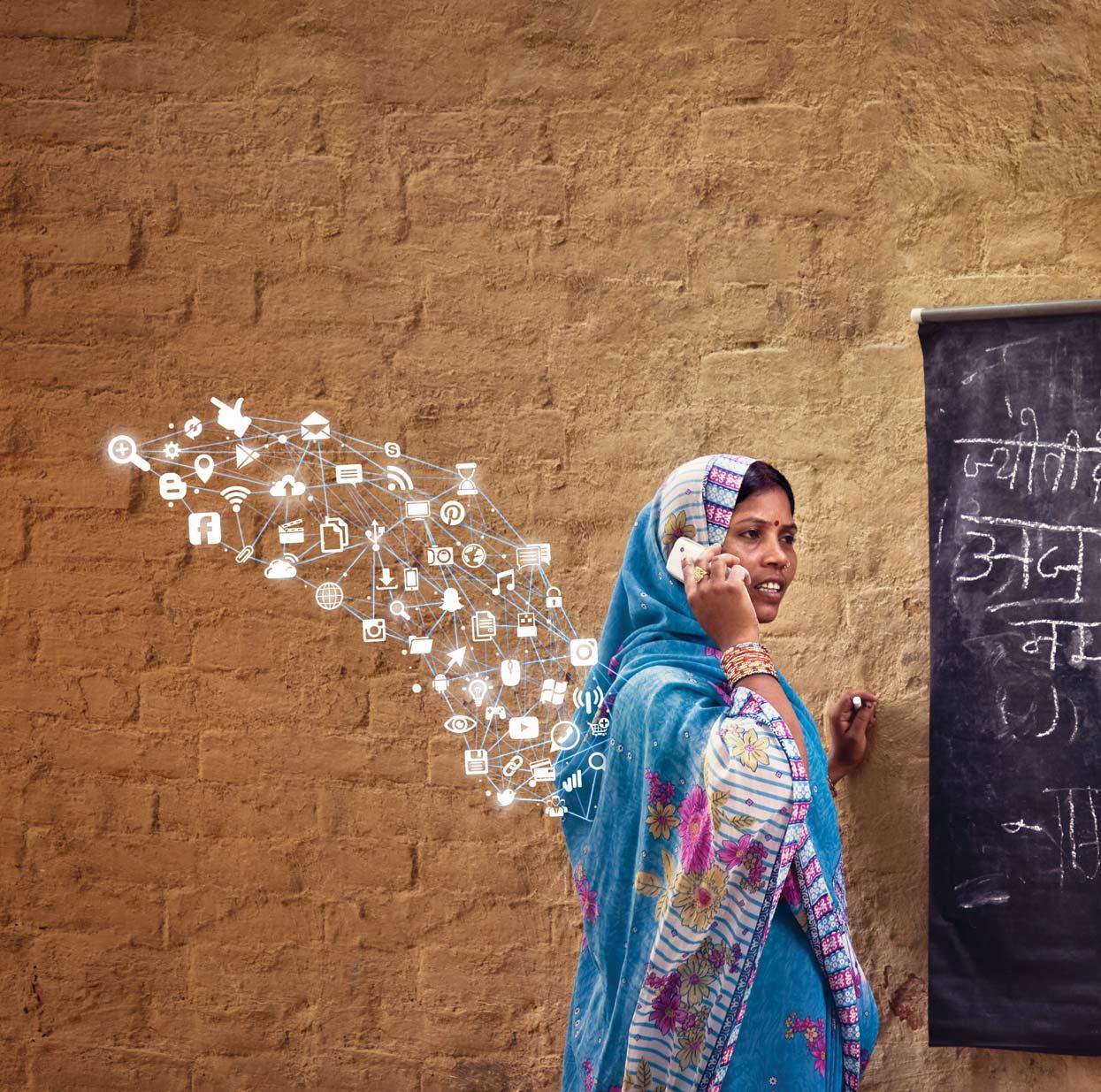
Our Team
Nilesh Agarwal Smita Aggarwal Sheela B.G.
Vinod Bansode Subhashish Bhadra
Mercia Cordeiro Namita Dalmia Shreya Deb
Apoorva Goyal Shalmoli Halder Sarvesh Kanodia
Mahesh Krishnamurthy Roopa Kudva Sushant Kumar
CV Madhukar Aditya Misra Siddharth Nautiyal Saurabh Nigam
Badri Pillapakkam Anuradha Ramachandran Kamlesh Samel
Pallavi Shetye Govind Shivkumar Madhav Tandan Bharath Visweswariah Rohan Vyavaharkar Arun Waghmare
Tanmay Amar Amol Warange
Behind our unique portfolio is a unique team.
With backgrounds in investing and investment management; government, policy and regulation; entrepreneurship, business and operational leadership; human resources; marketing and communications; and strategy, planning and research, our team draws from a rich tapestry of experiences spanning the private, public, and nonprofit sectors.
What we share is a deep commitment to transformative social impact in India, and empathy for entrepreneurs and the people they serve. We believe these entrepreneurs are scripting the story of India’s transformation, and they are the heroes of the Omidyar Network story. As we enter our second decade in India, they continue to provide us inspiration and purpose.
About Omidyar Network
Omidyar Network is a philanthropic investment firm dedicated to harnessing the power of markets to create opportunity for people to improve their lives. Established in 2004 by eBay founder Pierre Omidyar and his wife Pam, the organisation has committed more than US$ 1 billion to innovative for-profit companies and nonprofit organisations to catalyse economic and social change. In India, Omidyar Network focuses on helping the hundreds of millions of Indians in low-income and lower-middle-income populations, which we define as ranging from the poorest among us to the existing middle class by working across multiple areas, including: Digital Identity, Education, Emerging Tech, Financial Inclusion, Governance & Citizen Engagement, and Property Rights.
To learn more, visit www.omidyarnetwork.com, and follow on Twitter @omidyarnetwork #PositiveReturns.
Legal Disclaimer
This report is for informational purposes only and should not be construed as investment or other professional advice. Information has been obtained from sources believed to be reliable, but Omidyar Network does not warrant its completeness or accuracy. Omidyar Network owns a significant equity stake in some of the companies referenced in this report, and expects to continue making investments in these and other companies in this sector.
Omidyar Network India Advisors Private Limited, 91B, 5 North Avenue, Maker Maxity, Bandra-Kurla Complex, Mumbai 400051. +9122 6118 730 l india@omidyar.com

















































